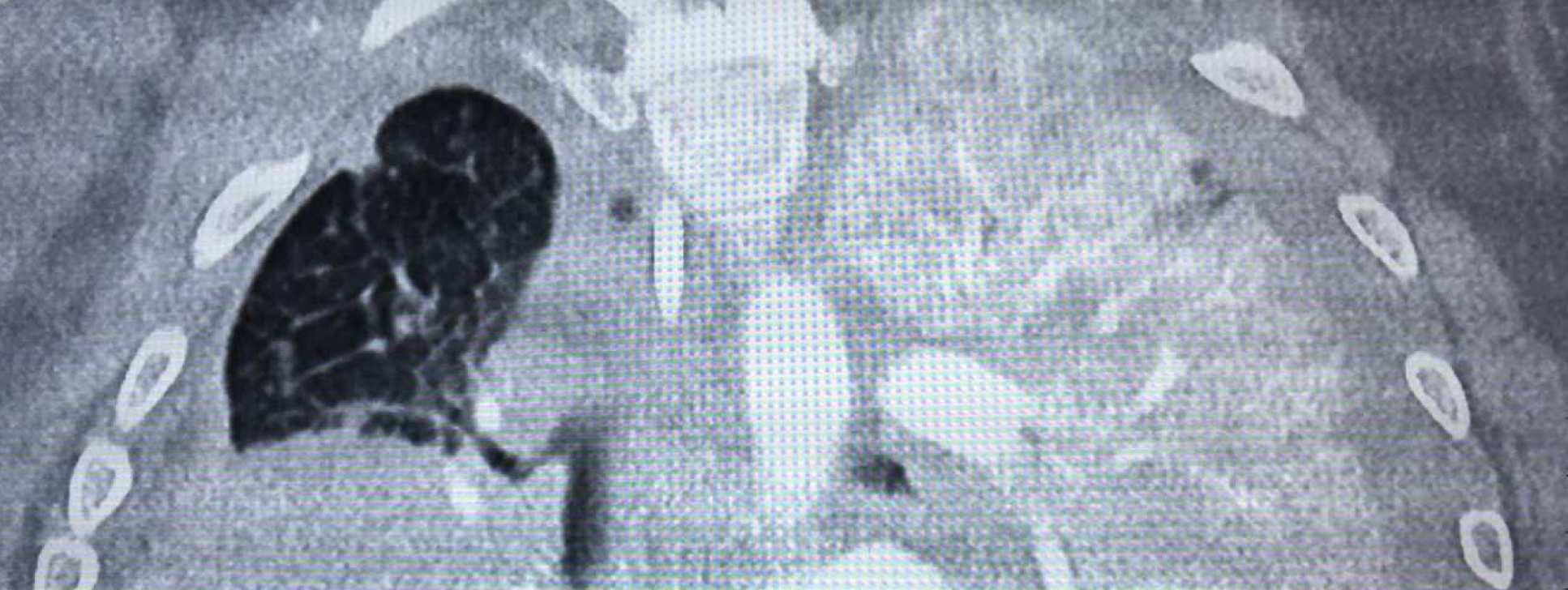Acute Respiratory Distress Syndrome

Contact us
For any enquiries related to Acute Respiratory Distress Syndrome, please contact
Dr Mike Wilson
michael.wilson@imperial.ac.uk
Dr Brijesh Patel
brijesh.patel@imperial.ac.uk
Overview
Acute respiratory distress syndrome (ARDS) is a medical condition occurring in critically ill patients characterised by widespread inflammation in the lungs. ARDS is not a disease, rather it is a complex clinical entity which may be triggered by various pathologies such as trauma, pneumonia and sepsis. The syndrome is associated with a high mortality rate between 20 and 50% and currently therapy includes diagnosis and treatment of the underying cause (e.g. bacterial or viral pneumonia) as well as organ support until recovery e.g. Extracorporeal life support. The mortality rate with ARDS varies widely based on severity, the patient's age, and the presence of other underlying medical conditions.
Our research has developed world-leading pre-clinical and human translational models used to investigate the pathophysiology of ARDS. Given that ARDS is hetrogenous and caused by a multitude of initiating insults the development of clinically relevant models with a variety of aetiologies is important to attain a clear appreciation for what different models actually reflect. In particular, a dysregulated inflammatory response is thought to play a major role in ARDS, and although the lung may be the primary organ affected, in reality patients most frequently die due to failure of other organs. It is therefore vital to understand the interactions between the physiological and immunological processes occurring during ARDS, and how the lungs communicate with the rest of the body.
Summary of current research
- Ventilator-induced lung injury: Our group has a long-standing interest in the pathophysiology of ventilator-induced lung injury (VILI). While mechanical ventilation is the primary supportive therapy delivered to patients with ARDS, the process is known to cause additional inflammation and injury to the lung. We use models of in vitro cell stretch and a world-leading, nationally unique in vivo set-up to investigate VILI, from its initiation to its consequences.
- TNF signalling: Tumour necrosis factor (TNF) is known to be an important pro-inflammatory cytokine during ARDS and sepsis, but therapies based on inhibiting this mediator have not proven useful clinically. We believe that this is due to the complex biology of TNF signalling, which acts through two competing receptors. For the last few years we have been collaborating with GSK testing novel antibodies targeting individual TNF receptors in different in vivo models. We are also exploring the biological processes induced by the different receptors in order to understand the downstream mechanisms of this complex mediator.
- Cell death in ARDS: We recently showed that during the early ARDS, death signals within alveolar epithelial cells induce leak of tissue fluid into alveoli. Historically, it has been thought that this leak is a direct consequence of cells dying but our work shows, for the first time, that the death signal itself, not the death of the cell, causes ARDS. This concept, which we have coined ‘apoptosis limbo’, suggests that if cells are not dead then we can potentially find treatments to revive, reanimate, and restore epithelial function in ARDS. Cell death is integral to normal organ function and repair and recovery from disease. We will examine the death and survival balance in the lung and investigate the beneficial and detrimental effects of blocking death signals. We use genetic and pharmacological approaches to establish the benefits and side effects of modulating death signals. We are examining the role of cell death during all stages of ARDS, injurious and reparative.
- Mechanotransduction: We are interested in the very initial phases of VILI, specifically the processes by which lung deformation initiates the inflammatory response. We have recently shown that within 1 minute of beginning excessive ventilation, endothelial cells within the lung show signs of inflammatory pathway activation. By understanding how this happens, and importantly, how other cells within the lung subsequently become activated we believe that we may be able to specifically prevent the additional injury caused by ventilation, while leaving the rest of the body’s normal responses to infection intact.
- Systemic dissemination: One of the major consequences of VILI is the dissemination of a local inflammation into a systemic one, although the mechanisms underlying this are unknown. We have shown that monocytes within the lung vasculature become activated following ventilation, leading to release of cytokines into the circulation. We are currently exploring the mechanisms by which these cells become activated using in vivo and in vitro techniques.
- Comorbidities: While there is no specific therapeutic treatment for ARDS, there are various patient populations which show different susceptibilities to develop ARDS, and different mortality. We believe that by exploring the reasons why certain comorbidities, such as obesity, diabetes etc display an altered susceptibility to ARDS, we may be able to identify novel mechanisms of disease. Specifically, we have been investigating the susceptibility of obese mice to ARDS (funded by the BJA/RCoA).
Key members within Acute Respiratory Distress Syndrome
Dr Nandor Marczin
/prod01/channel_2/media/migration/faculty-of-medicine/Nandor_Marczin--tojpeg_1470837327275_x4-3.jpg)
Dr Nandor Marczin
Senior Clinical Lecturer Honorary consultant
Dr Kieran O'Dea
/prod01/channel_2/media/migration/faculty-of-medicine/ODea--tojpeg_1478188704055_x4-3.jpg)
Dr Kieran O'Dea
Senior Research Fellow
Dr Brijesh Patel
/prod01/channel_2/media/migration/faculty-of-medicine/202592_Patel_Brijesh--tojpeg_1478122061923_x1--tojpeg_1485344058751_x4-5.jpg)
Dr Brijesh Patel
Clinical Lecturer
Dr Suveer Singh
/prod01/channel_2/media/migration/faculty-of-medicine/Sing--tojpeg_1486981035722_x4-2.jpg)
Dr Suveer Singh
Honorary Clinical Senior Lecturer
Professor Masao Takata
/prod01/channel_2/media/migration/faculty-of-medicine/Masao--tojpeg_1485336829790_x4-4.jpg)
Professor Masao Takata
Magill Chair in Anaesthetics
Dr Kate Tatham
/prod01/channel_2/media/migration/faculty-of-medicine/Kate-Blue-top--tojpeg_1509957855132_x4.jpg)
Dr Kate Tatham
Clinical Lecturer
Dr Michael Wilson
/prod01/channel_2/media/migration/faculty-of-medicine/Wilson--tojpeg_1478188768423_x4-1.jpg)
Dr Michael Wilson
Senior Lecturer
Collaborators and funders
Collaborators
- Professor Ian Adcock (Imperial College London)
- Professor Danny Mcauley (University of Belfast)
- Dr Anna Reed (Harefield Hospital)


